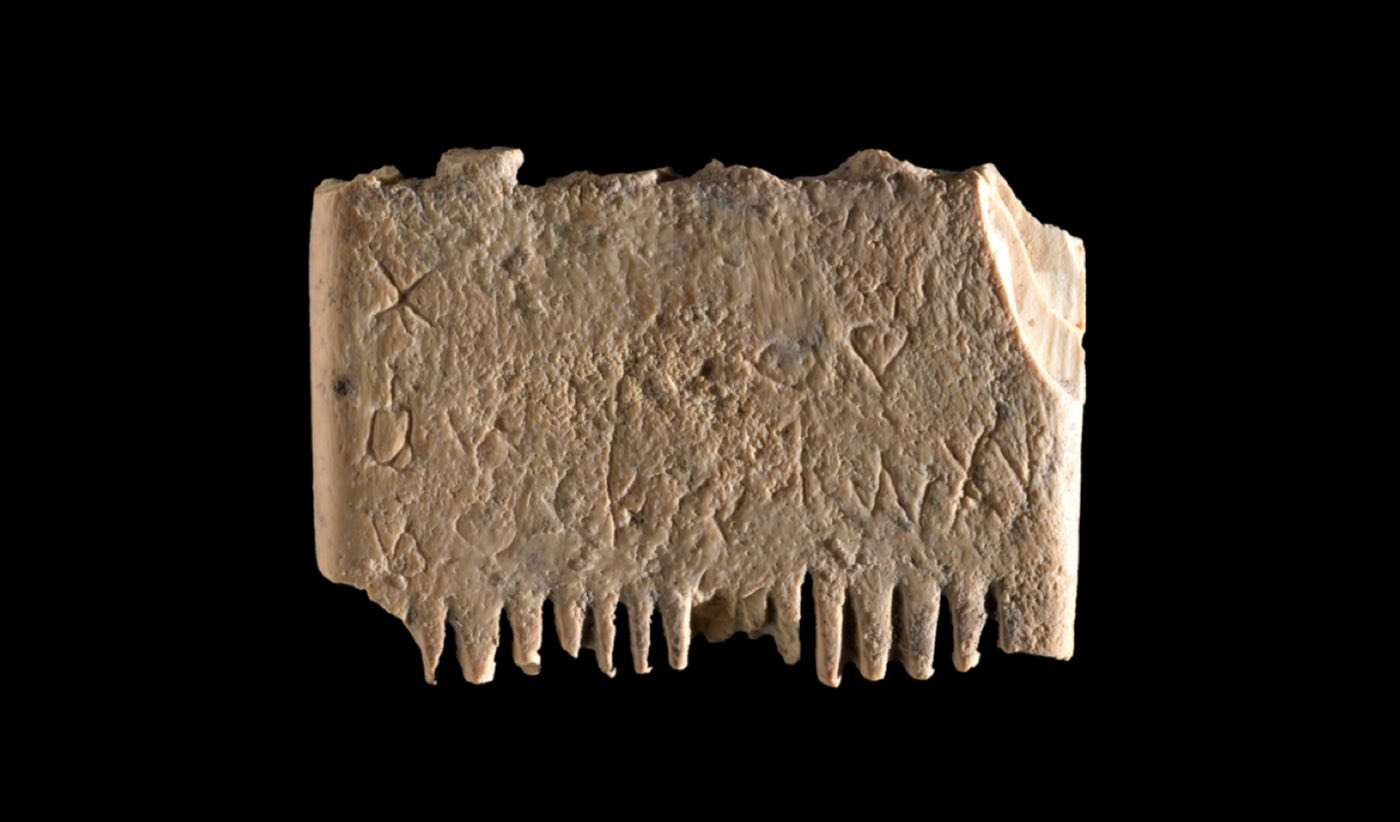89-year-old had to 'Speak Up' to Save Believed-Extinct Language of Indigenous People Who Revered Silence
It was only after retiring that Mr. Jaime realized, after going in search of one, that there were no other speakers of Chaná left.

The first sentence ever discovered that was written in the Canaanite language turns out to be a plea to eradicate beard lice.
Unearthed in the area of an ancient city in Israel by a team from Hebrew University of Jerusalem and Southern Adventist University from Tennessee, the ivory comb dates back 3,700 years.
The inscription on the ivory, derived from an elephant tusk, was translated to be, ‘May this tusk root out the lice of the hair and the beard'.
The alphabet, which is an ancestor to many modern alphabets, was invented around 1800 BCE and was used by the Canaanites and later by most other languages in the world. Until recently, no meaningful Canaanite inscriptions had been discovered in Israel, save only two or three words here and there—so researchers called the artifact an amazing discovery.
Dated to around 1700 BCE, the small comb was unearthed at Tel Lachish—an ancient Canaanite and Israelite city in the Shephelah region, on the South bank of the Lakhish River.
"This is the first sentence ever found in the Canaanite language in Israel. There are Canaanites in Ugarit in Syria, but they write in a different script, not the alphabet that is used till today," said Professor Yosef Garfinkel. "The comb inscription is direct evidence for the use of the alphabet in daily activities some 3700 years ago. This is a landmark in the history of the human ability to write."
The letters of the inscription were engraved in a very shallow manner. It was excavated in 2017 but the letters were only noticed later during post-processing in 2022 by Dr. Madeleine Mumcuoglu.
The comb only measures 3.5 x 2.5 cm, and has teeth on both sides. Although their bases are still visible, the comb teeth themselves were broken in antiquity. The central part of the comb is somewhat eroded, possibly by the pressure of fingers holding the comb during haircare or removal of lice from the head or beard. The side of the comb with six thick teeth was used to untangle knots in the hair, while the other side, with 14 fine teeth, was used to remove lice and their eggs, much like today.
There are 17 Canaanite letters on the comb. They are archaic in form—from the first stage of the invention of the alphabet script. They form seven words in Canaanite, reading: "May this tusk root out the lice of the hair and the beard."
Ivory was a very expensive material and likely an imported luxury object. As there were no elephants in Canaan during that time period, the comb likely came from nearby Egypt—showing that even people of high social status suffered from lice.
The research team analyzed the comb itself for the presence of lice under a microscope and photographs were taken of both sides. Remains of head lice, 0.5–0.6 mm in size, were found on the second tooth. The climatic conditions of Lachish, however, did not allow preservation of whole head lice but only those of the outer chitin membrane of the nymph stage head louse.
Despite its small size, the inscription on the comb, which was deciphered by Dr. Daniel Vainstub at Ben Gurion University, has very special features, some of which are unique and fill in gaps and lacunas in our knowledge of many aspects of the culture of Canaan in the Bronze Age. For the first time, we have an entire verbal sentence written in the dialect spoken by the Canaanite inhabitants of Lachish, enabling us to compare this language in all its aspects with the other sources for it. Second, the inscription on the comb sheds light on some hitherto poorly attested aspects of the everyday life of the time, haircare and dealing with lice.
Third, this is the first discovery in the region of an inscription referring to the purpose of the object on which it was written, as opposed to dedicatory or ownership inscriptions on objects. Further, the engraver's skill in successfully executing such tiny letters (1–3 mm wide) is a fact that from now on should be taken into account in any attempt to summarize and draw conclusions on literacy in Canaan in the Bronze Age.
The site of Tel Lachish, which was a major Canaanite city state in the second millennium BCE and the second most important city in the biblical kingdom of Judah, is under the protection of the Israel Nature and Parks Authority. The findings were published in the Jerusalem Journal of Archaeology.
NEVER Share Combs—But DO Share This Cool Story…
Be the first to comment